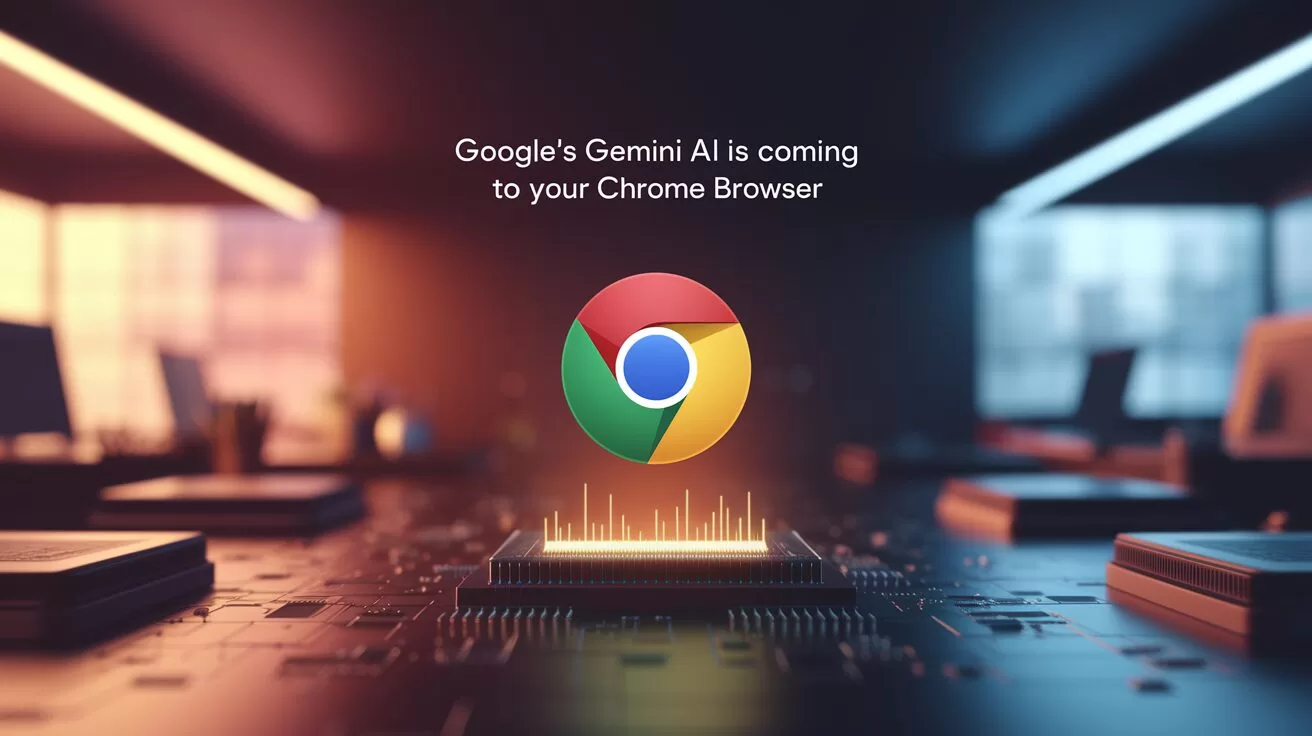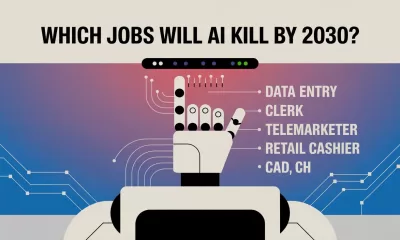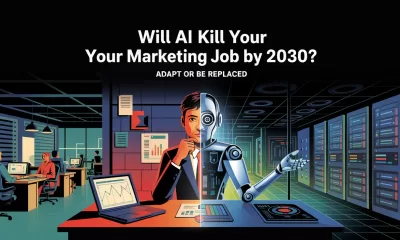News
New York Times Encourages Staff to Use AI for Headlines and Summaries
The New York Times embraces generative AI for headlines and summaries, sparking staff worries and a looming legal clash over AI’s role in modern journalism.
Published
2 months agoon
By
AIinAsia
TL;DR – What You Need to Know in 30 Seconds
- The New York Times has rolled out a suite of generative AI tools for staff, ranging from code assistance to headline generation.
- These tools include models from Google, GitHub, Amazon, and a bespoke summariser called Echo (Semafor, 2024).
- Employees are allowed to use AI to create social media posts, quizzes, and search-friendly headlines — but not to draft or revise full articles.
- Some staffers fear a decline in creativity or accuracy, as AI chatbots can be known to produce flawed or misleading results.
NYT Generative AI Headlines? Whatever Next!
When you hear the phrase “paper of record,” you probably think of tenacious reporters piecing together complex investigations, all with pen, paper, and a dash of old-school grit. So you might be surprised to learn that The New York Times — that very “paper of record” — is now fully embracing generative AI to help craft headlines, social media posts, newsletters, quizzes, and more. That’s right, folks: the Grey Lady is stepping into the brave new world of artificial intelligence, and it’s causing quite a stir in the journalism world.
In early announcements, the paper’s staff was informed that they’d have access to a suite of brand-new AI tools, including generative models from Google, GitHub, and Amazon, as well as a bespoke summarisation tool called Echo (Semafor, 2024). This technology, currently in beta, is intended to produce concise article summaries for newsletters — or, as the company guidelines put it, create “tighter” articles.
Generative AI can assist our journalists in uncovering the truth and helping more people understand the world,” the newspaper’s new editorial guidelines read.
But behind these cheery official statements, some staffers are feeling cautious. What does it mean for a prestigious publication — especially one that’s been quite vocal about its legal qualms with OpenAI and Microsoft — to allow AI to play such a central role? Let’s take a closer look at how we got here, why it’s happening, and why some employees are less than thrilled.
The Backstory About NYT and Gen AI
For some time now, The New York Times has been dipping its toes into the AI waters. In mid-2023, leaked data suggested the paper had already trialled AI-driven headline generation (Semafor, 2024). If you’d heard rumours about “AI experiments behind the scenes,” they weren’t just the stuff of newsroom gossip.
Fast-forward to May 2024, and an official internal announcement confirmed an initiative:
A small internal pilot group of journalists, designers, and machine-learning experts [was] charged with leveraging generative artificial intelligence in the newsroom.
This hush-hush pilot team has since expanded its scope, culminating in the introduction of these new generative AI tools for a wider swath of NYT staff.
The guidelines for using these tools are relatively straightforward: yes, the staff can use them for summarising articles in a breezy, conversational tone, writing short promotional blurbs for social media, or refining search headlines. But they’re also not allowed to use AI for in-depth article writing or for editing copyrighted materials that aren’t owned by the Times. And definitely no skipping paywalls with an AI’s help, thank you very much.
The Irony of the AI Embrace
If you’re scratching your head thinking, “Hang on, didn’t The New York Times literally sue OpenAI and Microsoft for copyright infringement?” then you’re not alone. Indeed, the very same lawsuit continues to chug along, with Microsoft scoffing at the notion that its technology misuses the Times’ intellectual property. And yet, some forms of Microsoft’s AI, specifically those outside ChatGPT’s standard interface, are now available to staff — albeit only if their legal department green-lights it.
For many readers (and likely some staff), it feels like a 180-degree pivot. On the one hand, there’s a lawsuit expressing serious concerns about how large language models might misappropriate or redistribute copyrighted material. On the other, there’s a warm invitation for in-house staff to hop on these AI platforms in pursuit of more engaging headlines and social posts.
Whether you see this as contradictory or simply pragmatic likely depends on how much you trust these AI tools to respect intellectual property boundaries. The Times’ updated editorial guidelines do specify caution around using AI for copyrighted materials — but some cynics might suggest that’s easier said than done.
When Journalists Meet Machines
One of the main selling points for these AI tools is their capacity to speed up mundane tasks. Writing multiple versions of a search-friendly headline or summarising a 2,000-word investigation in a few lines can be quite time-consuming. The Times is effectively saying: “If a machine can handle this grunt work, why not let it?”
But not everyone is on board, and it’s not just about potential copyright snafus. Staffers told Semafor that some colleagues worry about a creeping laziness or lack of creativity if these AI summarisation tools become the default. After all, there’s a risk that if AI churns out the same style of copy over and over again, the paper’s famed flair for nuance might get watered down (Semafor, 2024).
Another fear is the dreaded “hallucination” effect. Generative AI can sometimes spit out misinformation, introducing random facts or statistics that aren’t actually in the original text. If a journalist or editor doesn’t thoroughly check the AI’s suggestions, well, that’s how mistakes sneak into print.
Counting the Cost
The commercial angle can’t be ignored. Newsrooms worldwide are experimenting with AI, not just for creative tasks but also for cost-saving measures. As budgets get tighter, the ability to streamline certain workflows might look appealing to management. If AI can generate multiple variations of headlines, social copy, or quiz questions in seconds, why pay staffers to do it the old-fashioned way?
Yet, there’s a balance to be struck. The New York Times has a reputation for thoroughly fact-checked, carefully written journalism. Losing that sense of craftsmanship in favour of AI-driven expediency could risk alienating loyal readers who turn to the Times for nuance and reliability.
The Road Ahead
It’s far too soon to say if The New York Times’ experiment with AI will usher in a golden era of streamlined, futuristic journalism — or if it’ll merely open Pandora’s box of inaccuracies and diminishing creative standards. Given the paper’s clout, its decisions could well influence how other major publications deploy AI. After all, if the storied Grey Lady is on board, might smaller outlets follow suit?
For the rest of us, this pivot sparks some larger, existential questions about the future of journalism. Will readers and journalists learn to spot AI-crafted text in the wild? Could AI blur the line between sponsored content and editorial copy even further? And as lawsuits about AI training data keep popping up, will a new set of norms and regulations shape how newsrooms harness these technologies?
So, Where Do We Go From Here?
The Times’ decision might feel like a jarring turn for some of its staff and longtime readers. Yet, it reflects broader trends in our increasingly AI-driven world. Regardless of where you stand, it’s a reminder that journalism — from how stories are researched and written, to how headlines are crafted and shared — is in a dynamic period of change.
Generative AI can assist our journalists in uncovering the truth and helping more people understand the world.
Time will tell whether that promise leads to clearer insights or a murkier reality for the paper’s readers. Meanwhile, in a profession built on judgement calls and critical thinking, the introduction of advanced AI tools raises a timely question: How much of the journalism we trust will soon be shaped by lines of code rather than human ingenuity?
What does it mean for the future of news when even the most trusted institutions start to rely on algorithms for the finer details — and how long will it be before “the finer details” become everything?
You might also like:
- The Future of Journalism and Ethical Dilemmas
- AI in the News: Opportunity or Threat?
- Read the full NYT Gen AI policy here
Author
Discover more from AIinASIA
Subscribe to get the latest posts sent to your email.
You may like
-


The Three AI Markets Shaping Asia’s Future
-


Adobe Jumps into AI Video: Exploring Firefly’s New Video Generator
-


How Singtel Used AI to Bring Generations Together for Singapore’s SG60
-


Voice From the Grave: Netflix’s AI Clone of Murdered Influencer Sparks Outrage
-


How Will AI Skills Impact Your Career and Salary in 2025?
-


Beginner’s Guide to Using Sora AI Video
News
OpenAI’s New ChatGPT Image Policy: Is AI Moderation Becoming Too Lax?
ChatGPT now generates previously banned images of public figures and symbols. Is this freedom overdue or dangerously permissive?
Published
3 weeks agoon
March 30, 2025By
AIinAsia
TL;DR – What You Need to Know in 30 Seconds
- ChatGPT can now generate images of public figures, previously disallowed.
- Requests related to physical and racial traits are now accepted.
- Controversial symbols are permitted in strictly educational contexts.
- OpenAI argues for nuanced moderation rather than blanket censorship.
- Move aligns with industry trends towards relaxed content moderation policies.
Is AI Moderation Becoming Too Lax?
ChatGPT just got a visual upgrade—generating whimsical Studio Ghibli-style images that quickly became an internet sensation. But look beyond these charming animations, and you’ll see something far more controversial: OpenAI has significantly eased its moderation policies, allowing users to generate images previously considered taboo. So, is this a timely move towards creative freedom or a risky step into a moderation minefield?
ChatGPT’s new visual prowess
OpenAI’s latest model, GPT-4o, introduces impressive image-generation capabilities directly inside ChatGPT. With advanced photo editing, sharper text rendering, and improved spatial representation, ChatGPT now rivals specialised image AI tools.
But the buzz isn’t just about cartoonish visuals; it’s about OpenAI’s major shift on sensitive content moderation.
Moving beyond blanket bans
Previously, if you asked ChatGPT to generate an image featuring public figures—say Donald Trump or Elon Musk—it would simply refuse. Similarly, requests for hateful symbols or modifications highlighting racial characteristics (like “make this person’s eyes look more Asian”) were strictly off-limits.
No longer. Joanne Jang, OpenAI’s model behaviour lead, explained the shift clearly:
“We’re shifting from blanket refusals in sensitive areas to a more precise approach focused on preventing real-world harm. The goal is to embrace humility—recognising how much we don’t know, and positioning ourselves to adapt as we learn.”
In short, fewer instant rejections, more nuanced responses.
Exactly what’s allowed now?
With this update, ChatGPT can now depict public figures upon request, moving away from selectively policing celebrity imagery. OpenAI will allow individuals to opt-out if they don’t want AI-generated images of themselves—shifting control back to users.
Controversially, ChatGPT also now accepts previously prohibited requests related to sensitive physical traits, like ethnicity or body shape adjustments, sparking fresh debate around ethical AI usage.
Handling the hottest topics
OpenAI is cautiously permitting requests involving controversial symbols—like swastikas—but only in neutral or educational contexts, never endorsing harmful ideologies. GPT-4o also continues to enforce stringent protections, especially around images involving children, setting even tighter standards than its predecessor, DALL-E 3.
Yet, loosening moderation around sensitive imagery has inevitably reignited fierce debates over censorship, freedom of speech, and AI’s ethical responsibilities.
A strategic shift or political move?
OpenAI maintains these changes are non-political, emphasising instead their longstanding commitment to user autonomy. But the timing is provocative, coinciding with increasing regulatory pressure and scrutiny from politicians like Republican Congressman Jim Jordan, who recently challenged tech companies about perceived biases in AI moderation.
This relaxation of restrictions echoes similar moves by other tech giants—Meta and X have also dialled back content moderation after facing similar criticisms. AI image moderation, however, poses unique risks due to its potential for widespread misinformation and cultural distortion, as Google’s recent controversy over historically inaccurate Gemini images has demonstrated.
What’s next for AI moderation?
ChatGPT’s new creative freedom has delighted users, but the wider implications remain uncertain. While memes featuring beloved animation styles flood social media, this same freedom could enable the rapid spread of less harmless imagery. OpenAI’s balancing act could quickly draw regulatory attention—particularly under the Trump administration’s more critical stance towards tech censorship.
The big question now: Where exactly do we draw the line between creative freedom and responsible moderation?
Let us know your thoughts in the comments below!
You may also like:
- China’s Bold Move: Shaping Global AI Regulation with Watermarks
- China’s Bold Move: Shaping Global AI Regulation with Watermarks
- Or try ChatGPT now by tapping here.
Author
Discover more from AIinASIA
Subscribe to get the latest posts sent to your email.
News
Tencent Joins China’s AI Race with New T1 Reasoning Model Launch
Tencent launches its powerful new T1 reasoning model amid growing AI competition in China, while startup Manus gains major regulatory and media support.
Published
4 weeks agoon
March 27, 2025By
AIinAsia
TL;DR – What You Need to Know in 30 Seconds
- Tencent has launched its upgraded T1 reasoning model
- Competition heats up in China’s AI market
- Beijing spotlights Manus
- Manus partners with Alibaba’s Qwen AI team
The Tencent T1 Reasoning Model Has Launched
Tencent has officially launched the upgraded version of its T1 reasoning model, intensifying competition within China’s already bustling artificial intelligence sector. Announced on Friday (21 March), the T1 reasoning model promises significant enhancements over its preview edition, including faster responses and improved processing of lengthy texts.
In a WeChat announcement, Tencent highlighted T1’s strengths, noting it “keeps the content logic clear and the text neat,” while maintaining an “extremely low hallucination rate,” referring to the AI’s tendency to generate accurate, reliable outputs without inventing false information.
The Turbo S Advantage
The T1 model is built on Tencent’s own Turbo S foundational language technology, introduced last month. According to Tencent, Turbo S notably outpaces competitor DeepSeek’s R1 model when processing queries, a claim backed up by benchmarks Tencent shared in its announcement. These tests showed T1 leading in several key knowledge and reasoning categories.
Tencent’s latest launch comes amid heightened rivalry sparked largely by DeepSeek, a Chinese startup whose powerful yet affordable AI models recently stunned global tech markets. DeepSeek’s success has spurred local companies like Tencent into accelerating their own AI investments.
Beijing Spotlights Rising AI Star Manus
The race isn’t limited to tech giants. Manus, a homegrown AI startup, also received a major boost from Chinese authorities this week. On Thursday, state broadcaster CCTV featured Manus for the first time, comparing its advanced AI agent technology favourably against more traditional chatbot models.
Manus became a sensation globally after unveiling what it claims to be the world’s first truly general-purpose AI agent, capable of independently making decisions and executing tasks with minimal prompting. This autonomy differentiates it sharply from existing chatbots such as ChatGPT and DeepSeek.
Crucially, Manus has now cleared significant regulatory hurdles. Beijing’s municipal authorities confirmed that a China-specific version of Manus’ AI assistant, Monica, is fully registered and compliant with the country’s strict generative AI guidelines, a necessary step before public release.
Further strengthening its domestic foothold, Manus recently announced a strategic partnership with Alibaba’s Qwen AI team, a collaboration likely to accelerate the rollout of Manus’ agent technology across China. Currently, Manus’ agent is accessible only via invite codes, with an eager waiting list already surpassing two million.
The Race Has Only Just Begun
With Tencent’s T1 now officially in play and Manus gaining momentum, China’s AI competition is clearly heating up, promising exciting innovations ahead. As tech giants and ambitious startups alike push boundaries, China’s AI landscape is becoming increasingly dynamic—leaving tech enthusiasts and investors eagerly watching to see who’ll take the lead next.
What do YOU think?
Could China’s AI startups like Manus soon disrupt Silicon Valley’s dominance, or will giants like Tencent keep the competition at bay?
You may also like:
Tencent Takes on DeepSeek: Meet the Lightning-Fast Hunyuan Turbo S
DeepSeek in Singapore: AI Miracle or Security Minefield?
Alibaba’s AI Ambitions: Fueling Cloud Growth and Expanding in Asia
Learn more by tapping here to visit the Tencent website.
Author
Discover more from AIinASIA
Subscribe to get the latest posts sent to your email.
News
Google’s Gemini AI is Coming to Your Chrome Browser — Here’s the Inside Scoop
Google is integrating Gemini AI into Chrome browser through a new experimental feature called Gemini Live in Chrome (GLIC). Here’s everything you need to know.
Published
4 weeks agoon
March 25, 2025By
AIinAsia
TL;DR – What You Need to Know in 30 Seconds
- Google is integrating Gemini AI into its Chrome browser via an experimental feature called Gemini Live in Chrome (GLIC).
- GLIC adds a clickable Gemini icon next to Chrome’s window controls, opening a floating AI assistant modal.
- Currently being tested in Chrome Canary, the feature aims to streamline AI interactions without leaving the browser.
Welcoming Google’s Gemini AI to Your Chrome Browser
If there’s one thing tech giants love more than AI right now, it’s finding new ways to shove that AI into everything we use. And Google—never one to be left behind—is apparently stepping up their game by sliding their Gemini AI directly into your beloved Chrome browser. Yep, that’s the buzz on the digital street!
This latest AI adventure popped up thanks to eagle-eyed folks at Windows Latest, who spotted intriguing code snippets hidden in Google’s Chrome Canary version. Canary, if you haven’t played with it before, is Google’s playground version of Chrome. It’s the spot where they test all their wild and wonderful experimental features, and it looks like Gemini’s next up on stage.
Say Hello to GLIC: Gemini Live in Chrome
They’re calling this new integration “GLIC,” which stands for “Gemini Live in Chrome.” (Yes, tech companies never resist a snappy acronym, do they?) According to the early glimpses from Canary, GLIC isn’t quite ready for primetime yet—no shock there—but the outlines are pretty clear.
Once activated, GLIC introduces a nifty Gemini icon neatly tucked up beside your usual minimise, maximise, and close window buttons. Click it, and a floating Gemini assistant modal pops open, ready and waiting for your prompts, questions, or random curiosities.
Prefer a less conspicuous spot? Google’s thought of that too—GLIC can also nestle comfortably in your system tray, offering quick access to Gemini without cluttering your browser interface.

Why Gemini in Chrome Actually Makes Sense
Having Gemini hanging out front and centre in Chrome feels like a smart move—especially when you’re knee-deep in tabs and need quick answers or creative inspiration on the fly. No more toggling between browser tabs or separate apps; your AI assistant is literally at your fingertips.
But let’s keep expectations realistic here—this is still Canary we’re talking about. Features here often need plenty of polish and tweaking before making it to the stable Chrome we all rely on. But the potential? Definitely exciting.
What’s Next?
For now, we’ll keep a close eye on GLIC’s developments. Will Gemini revolutionise how we interact with Chrome, or will it end up another quirky experiment? Either way, Google’s bet on AI is clearly ramping up, and we’re here for it. Don’t forget to sign up to our occasional newsletter to stay informed about this and other happenings around AI in Asia and beyond.
Stay tuned—we’ll share updates as soon as Google lifts the curtains a bit further.
You may also like:
- Revolutionising Search: Google’s New AI Features in Chrome
- Google Gemini: How To Maximise Its Potential
- Google Gemini: The Future of AI
- Try Google Carnary by tapping here — be warned, it can be unstable!
Author
Discover more from AIinASIA
Subscribe to get the latest posts sent to your email.

AI Career Guide: Land Your Next Job with Our AI Playbook

Will AI Take Your Job—or Supercharge Your Career?

Can AI Videos Really Boost Your Brand’s Authenticity?
Trending
-

 Business3 weeks ago
Business3 weeks agoCan PwC’s new Agent OS Really Make AI Workflows 10x Faster?
-

 Life2 weeks ago
Life2 weeks agoWhich Jobs Will AI Kill by 2030? New WEF Report Reveals All
-

 Life2 weeks ago
Life2 weeks agoAI Career Guide: Land Your Next Job with Our AI Playbook
-

 Business2 weeks ago
Business2 weeks agoWill AI Take Your Job—or Supercharge Your Career?
-

 Marketing2 weeks ago
Marketing2 weeks agoWill AI Kill Your Marketing Job by 2030?
-

 Tools2 weeks ago
Tools2 weeks agoCan AI Videos Really Boost Your Brand’s Authenticity?
-

 Business2 weeks ago
Business2 weeks agoThe Three AI Markets Shaping Asia’s Future
-

 Business3 weeks ago
Business3 weeks agoEmbrace AI or Face Replacement—Grab CEO Anthony Tan’s Stark Warning





























